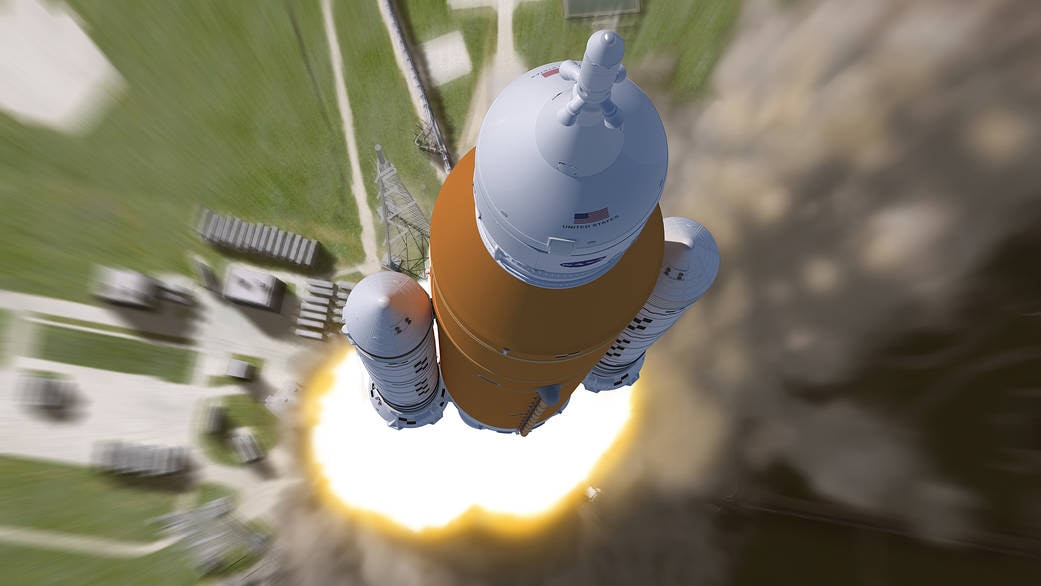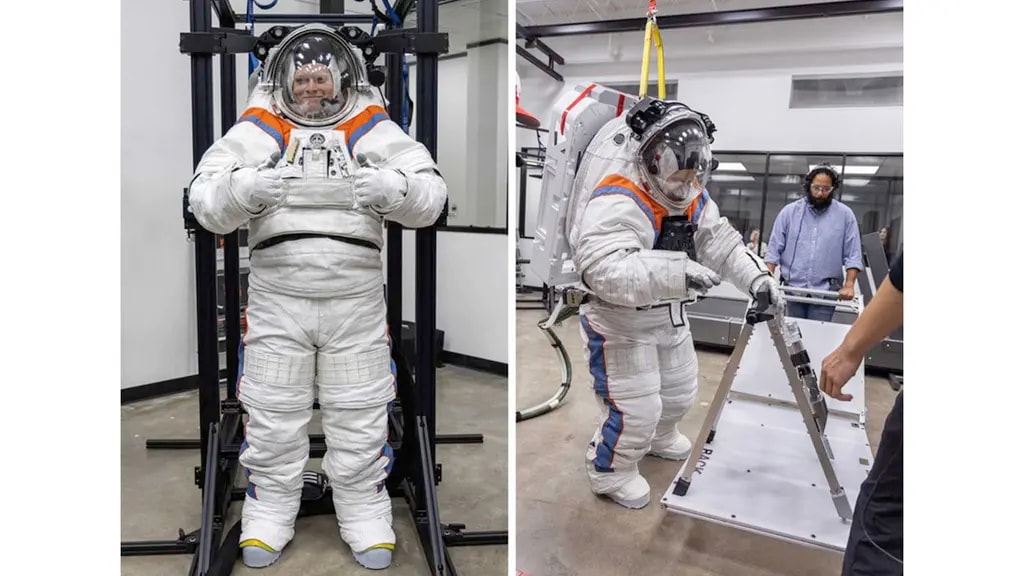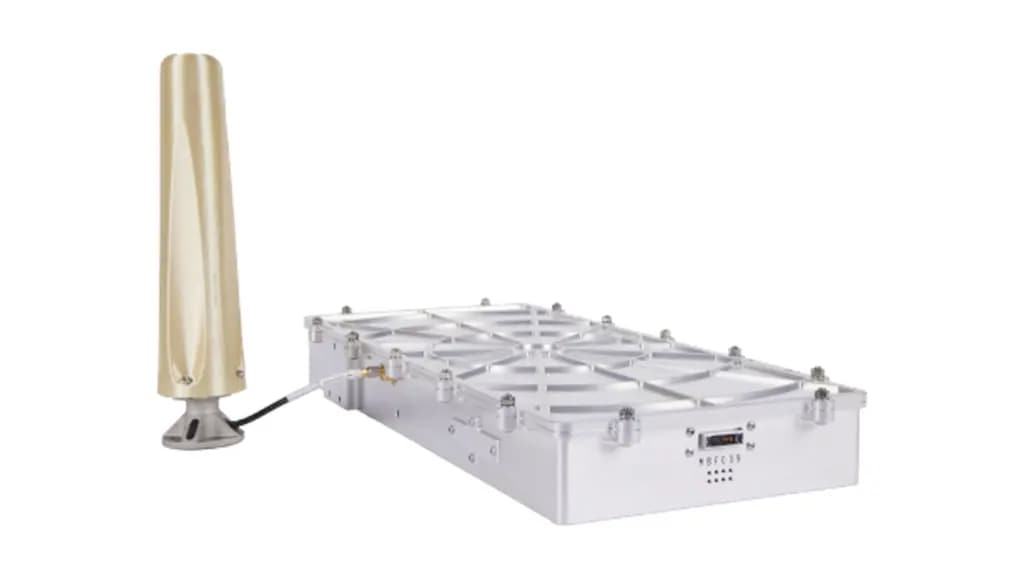The first astronauts returning to the Moon’s surface will communicate over a Nokia network

Artemis III, the first crewed NASA mission to set foot on the Moon in more than 50 years, will get a boost from Nokia’s cellular communications technology. Nokia has partnered with Axiom Space to deliver a spacesuit-integrated communication system that will allow Artemis III astronauts to communicate via voice and video with NASA Mission Control as well as send telemetry information back to Earth, while they explore the lunar surface.
The leading developer of lunar spacesuits, Axiom Space recently selected Nokia’s Lunar Surface Communications System (LSCS) for integration into its Axiom Extravehicular Mobility Unit (AxEMU) spacesuits, which Artemis III astronauts will wear as they work on the lunar surface. Developed by Nokia Bell Labs, the LSCS will allow Artemis III astronauts at the Moon’s south pole to share real-time HD video, transmit telemetry data from their spacesuits and communicate with mission controllers back on Earth. The LSCS will create a 4G/LTE network connecting the spacesuits to the Artemis III human landing system (HLS), from which a direct-to-Earth link will relay all communications to Mission Control at NASA’s Johnson Space Center in Houston.
Artemis III will be a historic mission, returning astronauts to the Moon for the first time since Apollo 17 in 1972. The long-term goal of NASA’s Artemis campaign is to establish a permanent base on the Moon and facilitate human missions to Mars. Just as astronauts will need life support, shelter and food on these missions, they will need networks to communicate with each other and go about their crucial work. Advanced high-speed, low latency and reliable networking technologies will be needed to connect habitats, vehicles, robots, sensors and scientific equipment. In its work with Axiom Space on the Artemis III lunar spacesuit, Nokia intends to prove that the same cellular technologies that connect billions of devices on Earth can meet the critical communications needs of these seminal missions.

Image credit: Axiom Space
Taking 4G further
The LSCS utilizes the same 4G/LTE technology deployed in networks across the globe. While it is a 4G/LTE system at its heart, it is unlike any cellular network on Earth. The LSCS is the result of nearly two decades of research and innovation into automation, optimization, miniaturization and hardware and software integration. Nokia Bell Labs completely reconceptualized the hardware and software design of a terrestrial 4G/LTE network to prepare the system for the unique operating parameters of a lunar mission and the harsh conditions of the Moon’s surface.
The LSCS has two main components. First, a network-in-a-box combines the radio, base station, routing, security and core elements of a terrestrial network into a single highly resilient unit that will be integrated into the HLS. Second, device modules will be integrated into Axiom Space’s AxEMU spacesuits, providing mobile voice and broadband connectivity up to two kilometers away from the HLS.

The LSCS network system software is highly integrated and optimized, creating an extremely compact system that is fully autonomous and capable of self-deploying, self-configuring and self-healing. The software was designed for high resiliency and includes multiple layers of redundancy. This approach helps alleviate network interruptions and enables the system to recover from potential hardware and electronic failures caused by cosmic radiation and other hazards on the lunar surface. This state-of-the-art software also allows the network to continue functioning even when faced with low or intermittent power supplies.
Both the network and the device modules have been carefully engineered to withstand the extreme environmental conditions on the lunar surface, including radiation, extreme temperature variations and the Moon’s complete lack of atmosphere. Finally, the equipment is designed to withstand the dynamic stresses of launch, spaceflight and lunar landing, as well as to meet Artemis III’s rigorous weight, size and power limitations.
The LSCS will outperform the ultra-high frequency (UHF) and WiFi radio technologies currently being studied for local communications on space missions. 4G/LTE connections deliver greater coverage and higher data throughputs compared to UHF and WiFi systems, allowing astronauts to operate much further away from base and be more productive in their work. For instance, the LSCS can simultaneously support multiple real-time HD video streams, voice communications between astronauts, detailed telemetry and sensor feeds from spacesuits and vehicles, and command-and-control links to robots.
Reaching beyond our world
Nokia foresees many opportunities for communication technologies in planetary exploration and is working with multiple agencies and companies on space-based initiatives. In late 2024, a version of the Nokia Bell Labs LSCS will journey to the Moon as part of the uncrewed Intuitive Machines IM-2 mission. IM-2 will establish the first cellular network on the Moon, which will connect two lunar exploration vehicles, Lunar Outpost’s MAPP rover and Intuitive Machines’ Micro-Nova hopper. This network will provide command-and-control links, telemetry data and live video feeds, helping the two vehicles explore the Moon’s surface and search for lunar ice.
In addition to demonstrating advanced wireless communication capabilities during the IM-2 and Artemis III lunar missions, Nokia Bell Labs is also creating the networking blueprints for future missions and programs. Nokia Bell Labs conducted a system engineering and integration study for NASA that lays out the network architecture, high-level designs, key engineering challenges, and risks and dependencies for lunar surface networks serving the Artemis campaign over the next decade.
In addition, the US Defense Advanced Research Projects Agency (DARPA) selected Nokia Bell Labs to participate in the 10-Year Lunar Architecture (LunA-10) program, the goal of which is to develop a multi-service infrastructure architecture and design for the future lunar economy. In both projects, Nokia Bell Labs looked beyond individual missions to explore the potential for large-scale lunar communications infrastructure to support a sustained human presence in space.
Nokia Bell Labs has a long history in space exploration. In the 1960s and 1970s, Bell Labs provided systems analysis and engineering for every crewed US space program from Mercury to Apollo. In 1962, Bell Labs and NASA launched into orbit Telstar 1, the first communications satellite capable of relaying TV signals between Europe and North America. And in 1964, Bell Labs researchers — and future Nobel laureates — Arno Penzias and Bob Wilson discovered the cosmic microwave background radiation left over from the Big Bang, confirming the now predominant theory on the origins of the universe.
By pushing the boundaries of communications on Earth and beyond, Nokia has accrued a wealth of technical knowledge that it can apply not only to discovering the mysteries of the solar system but also to creating better networks on our own planet.
Lead image credit: NASA/MSFC
Written by Thierry Klein and John Dow
